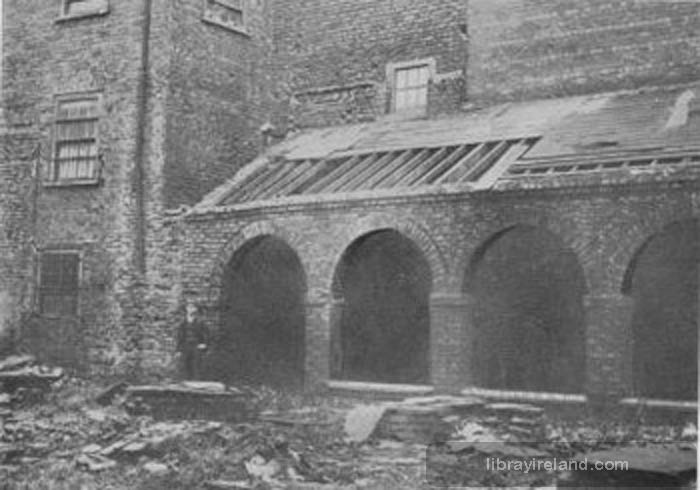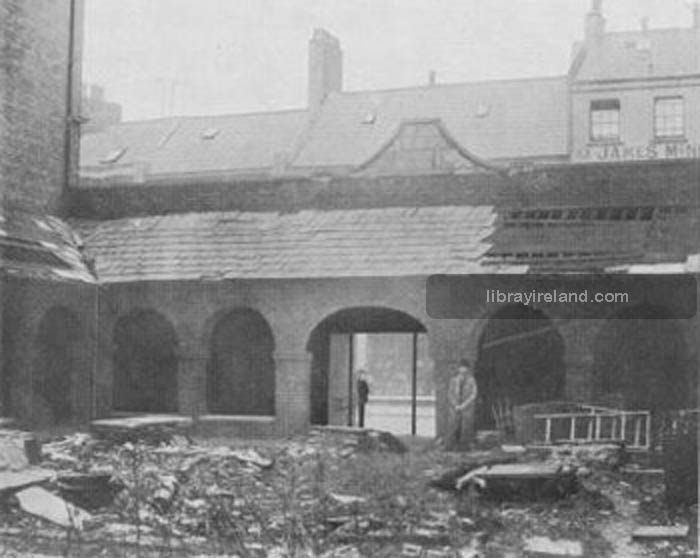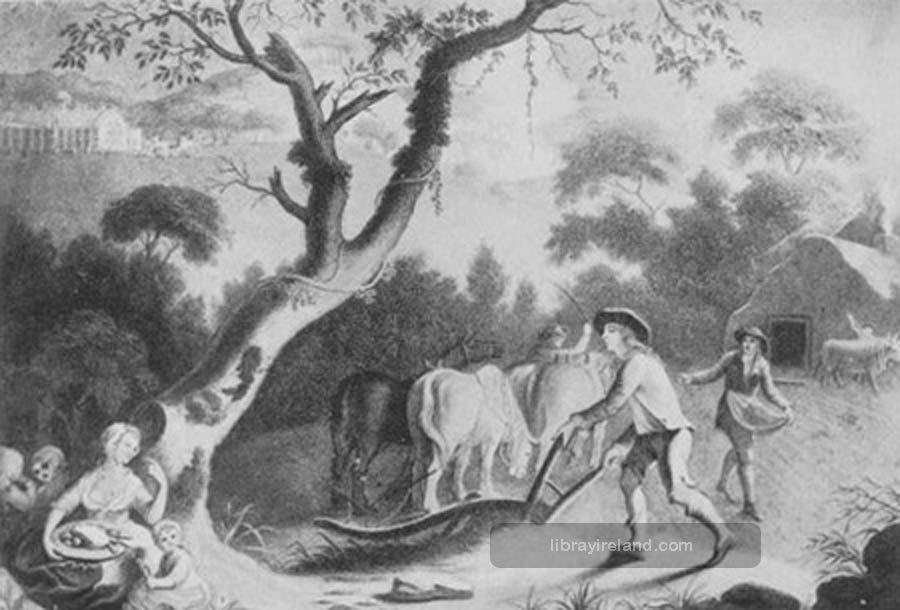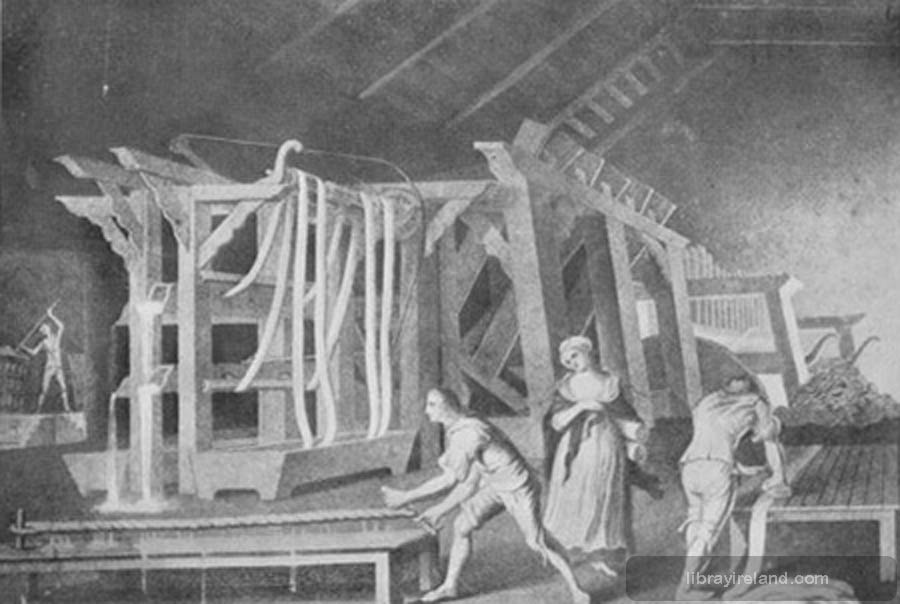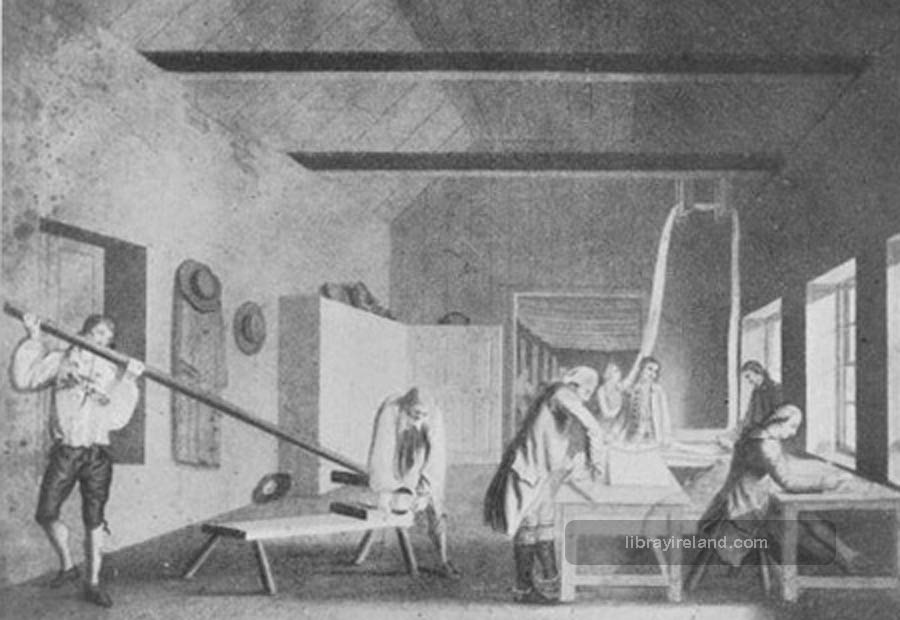Ulster Linen - Story of Belfast
THE next greatest manufactory in the world is the linen industry of York Street Mill.
Perhaps we might go back to the very earliest history of linen, and trace its wonderful increase and vast improvement up to the present time.
The manufacture of linen began in the East.
The Phoenicians planted colonies in Carthage and Spain and from thence it came to Ireland, and with it the spindle and loom.
The very earliest English writers speak of Irish linen as an essential part of dress.
In early ages, the Irish wore long linen garments dyed yellow, the dye being made from lichen.
The first notice of Irish linen in England was in the time of Henry III., 1272.
Henry VIII. mentioned that Irish linen had been exported for one hundred years. In his time, the Irish used linen in extravagant quantities, thirty yards being put into one garment.
Queen Elizabeth passed a bill to forbid steeping the flax in water, which proves to us now, that although she knew a great many things, there were still a few she did not know. She passed another law to forbid more than seven yards of linen to be used for one shirt.
In the year 1698, the woollen trade of Ireland was so successful that the English were seriously displeased about it, and some most unjust laws were passed to prohibit the woollen manufacture.
In the year 1702, Mr. Lewis [Louis] Cromelin came to Lisburn and brought 1,000 looms from Holland, and a number of improved spinning wheels.
Manufacturers used to bleach their own linen, but as time went on it was sent out to be bleached, and this became a special branch of the linen trade.
Up to the year 1770, linen was bleached with buttermilk, and nothing else was used. At Malone no buttermilk could be bought, as it all went to the bleach greens.
From 1781, all linen was computed at one shilling and fourpence a yard, which was changed later. Lawn was five shillings a yard, and cambric one pound two shillings and ninepence unbleached.
Then diaper and damask were made. John Holden made diaper in the year 1730, and it is wonderful to trace the development of the industry as it improves step by step.
William Coulson commenced a damask factory at Lisburn in 1766, which continues to make the finest quality.
Another at Ardoyne was opened in the year 1825, and both of these places are celebrated for the superior excellence of their damask.
The linen industry steadily increased until it became necessary to open a central hall for the convenience of the business.
The first Linen Hall was in Ann Street, in 1739. Lord Donegall gave £1,500 towards building it.
The next was in Donegall Street where St. Anne's Church was afterwards built.
It was after some time removed to a building on the other side of the street, where the date may still be seen cut over the doorway, “Brown Linen Hall, 1773.”
A stranger passing along the street, who might pause to look through the doorway, might very well be excused for thinking it was a neglected graveyard. The old stone tables where the goods were exhibited for sale are almost hidden beneath a luxuriant crop of tall grass and weeds.
An ancient lawsuit has at last been settled touching a claim against the place. A man came from Maghera in County Derry every Friday with a web of brown linen, which he opened on one of the old stone tables. He said that as long as it was exposed for sale the Brown Linen Hall could not be closed.
For forty-three years, through summer sunshine and winter snow, he never missed a Friday, and at his death his son carried on the old custom, but the place is now utterly deserted, roofless and broken down. Fortunately the brown linen trade was not all buried there.
The White Linen Hall was built in the year 1787, and Lord Donegall with his usual generosity gave the four acres of ground on which it was built.
The place was then known as the Castle Meadows. It stood at that time alone in a quiet spot, and afterwards the fine old houses in Donegall Square were built.
Many people still remember the pleasant garden and shady trees which surrounded the old Linen Hall.
Modern improvements have now swept it away, and the City Hall stands in its place.
There was a line of old trees and gardens fronting the Linen Hall from Chichester Street on to Fountain Street. It is really not so very long ago since bluebells and primroses were growing where stately buildings now stand at each corner of Donegall Square.
But we must come back to the largest factory in the world.
York Street Mill is an enormous place with additional works in Henry Street, York Road and Antrim. It gives constant employment to many thousands. It has 90,000 spindles and 1,000 power looms, and is indeed a busy hive of industry.
In the year 1900, there were 900,000 spindles running in Belfast alone, more than in any country in the world. Ulster has more than any three countries combined. There are 35,000 power looms in Ulster and 22,000 in Great Britain and the Continent of Europe combined.

